About
What is World Wetlands Day?
World Wetlands Day is celebrated each year on 2 February to raise awareness about wetlands. This day also marks the anniversary of the Convention on Wetlands, which was adopted as an international treaty in 1971.
A United Nations International Day
On 30 August 2021 the UN General Assembly adopted Resolution 75/317 that established 2 February as World Wetlands Day.
Why World Wetlands Day?
Nearly 90% of the world’s wetlands have been degraded since the 1700s, and we are losing wetlands three times faster than forests. Yet, wetlands are critically important ecosystems that contribute to biodiversity, climate mitigation and adaptation, freshwater availability, world economies and more.
It is urgent that we raise national and global awareness about wetlands in order to reverse their rapid loss and encourage actions to conserve and restore them.
World Wetlands Day is the ideal time to increase people’s understanding of these critically important ecosystems.
“Protecting Wetlands for Our Common Future” is the theme for World Wetlands Day 2025.
World Wetlands Day 2025 is of particular significance, as it coincides with the 15th Meeting of the Conference of the Contracting Parties to the Convention on Wetlands (COP15). Every three years, representatives of the governments of each of the Contracting Parties meet to facilitate crucial discussions on the conservation and sustainable use of wetlands and to agree on a work program for the next three years. Zimbabwe is the global conservation arena for COP15 – scheduled for 23-31 July 2025 in Victoria Falls under the same theme as World Wetlands Day 2025.
Who is behind World Wetlands Day?
The World Wetlands Day awareness campaign is organized by the Secretariat of the Convention on Wetlands. Contracting Parties of the Convention on Wetlands have been celebrating World Wetlands Day since 1997, when it was first established.
Who can join?
World Wetlands Day is open to everyone — from international organizations, governments, wetland practitioners, to children, youth, media, community groups, decision-makers, to all individuals — as these ecosystems are important for us all.



